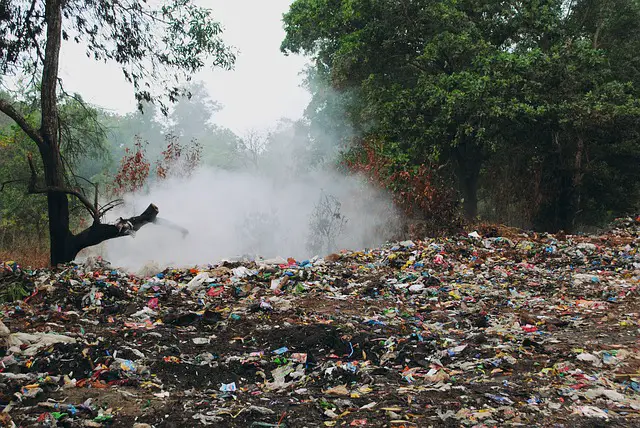In the guide below, we discuss whether landfills are good or bad specifically for the environment.
This guide compliments our more comprehensive guide on the pros and cons of landfills in general.
Summary – Are Landfills Good or Bad For The Environment?
Are They Good Or Bad?
Landfills can have a mix of both positive environmental effects, and also have some negative environmental effects.
Some of these effects can be managed, and some can’t.
We list these effects in the guide below.
Variables To Consider
Some of the variables that can impact how environmentally friendly a landfill is might be:
– The type of landfill and it’s features
Not all landfills are the same
There’s a big difference between well contained and sealed landfills (with good soil liners, and leachate management systems) vs open and uncontained landfills for example
There’s also different types of landfills that accept different types of waste and have different waste ‘cells’ on-site
– The type of waste
Organic matter vs solid waste for example
Organic matter decomposing in landfills might emit methane and carbon dioxide – both greenhouse gases.
Solid waste doesn’t emit GHGs when it breaks down.
Other Waste Management Options & Strategies To Consider
Aside from landfills, there are other waste management options to consider, and there’s also overall waste management strategies to consider.
How Landfills Might Be Good For The Environment
– Landfills provide a way to isolate materials away from the environment in one location
– Landfills provide a way to manage waste which can’t be recycled, or isn’t suitable for incineration or composting
– Landfill design and technology has improved in the last few decades, and this has led to improvements in the eco impact of modern landfills too. Toxins, leachate and greenhouse gases from landfills can all be captured or managed in different ways
– An effective landfill lining will prevent toxins and leachate from getting into the soil and leaching into water
– A leachate management system will manage leachate that accumulates in landfills
– Methane can be captured from landfills, and can be used as a source of energy generation to power homes with electricity
– At the end of a landfill’s lifespan, the land used on the site can be rehabilitated or restored. It can become parks, or be put to some other land us
How Landfills Might Be Bad For The Environment
– Organic matter in landfills decomposes and produces greenhouse gases like methane and carbon dioxide
In 2014, U.S. landfills emitted 148 million metric tons of methane (rubiconglobal.com)
Landfills without emissions capture will emit GHGs into the atmosphere
– Leachate (a toxic substance) can form in landfills when rain mixes with waste and toxic chemicals in the landfill (from waste like e-waste and PVC piping)
Leachate can leak out of landfills, or penetrate the landfill lining, and contaminate water sources (like groundwater) and soil.
Landfills that aren’t managed properly are a problem in this instance
– In developing countries, uncontained landfills can allow waste to escape into the environment
This waste can pollute the environment and have a range of environmental effects
Plastic pollution is one example of this
– Landfills use up land resources that could be used for something else, such as planting trees, or re-greening the land
– Waste that goes to landfill and isn’t recycled, or resources aren’t recovered from, contribute to resource depletion, as new materials have to be sourced for future products that become waste.
This is not congruent with a circular economy, and activities like mining and extraction can cause further pollution and environmental effects
Sources
1. https://www.bettermeetsreality.com/pros-cons-landfills-benefits-disadvantages/
2. https://www.rubiconglobal.com/truth-about-trash/
3. https://environmentvictoria.org.au/resource/problem-landfill/
4. https://www.hcr-llc.com/blog/the-3-most-common-landfill-problems-solutions
5. https://www.ecobin.com.au/whats-wrong-landfill-really-bad/
','' ); } ?>